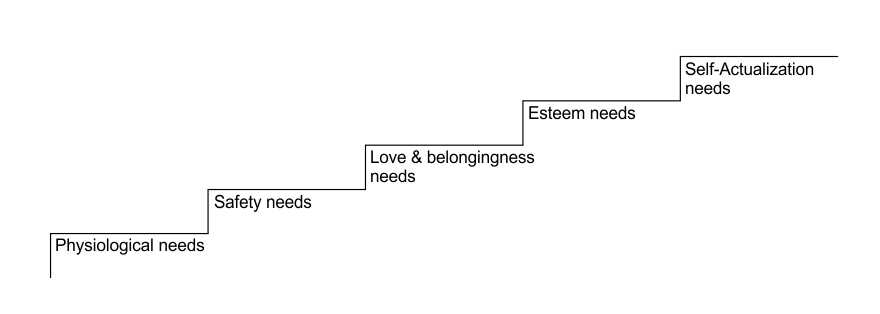At present, there is no generally used scale to measure satisfaction and the author of the final thesis shows how well it works to take Maslow’s hierarchy of needs as the basis. Using this theory enables to measure satisfaction on five different levels which together form a hierarchy (see the figure of Maslow’s hierarchy of needs above).
An organization is a separate environment which consists of multiple interest groups – for example, the clients, the employees and the owners. Both the individual and any interest group have the desire to satisfy the needs arising from their role.
The average client for example would like to get durable quality goods for a good price. Some clients also pay attention to safety and security, whereas for some a pleasant interaction with the customer service staff is more important.
The primary desire of employees is to keep their jobs and receive worthy pay. Other factors of frequent importance are the security of the working environment, relationships with colleagues, acknowledgement and self-actualization.
The main interest of the owners of a company is knowing the possible risks related to the organization and to gain worthy revenue from the investment.
These needs can be illustrated in levels, because in order to increase satisfaction, the needs of lower level must be satisfied first and from there, the next ones have to be reached step by step.
Satisfaction vs dissatisfaction
Maslow’s theory was also confirmed in the research of F. Herzberg, in which he determined what motivates people in working life and what makes them dissatisfied. The research revealed that employees gain the most satisfaction from the content of work (development, career, acknowledgement, self-actualization, etc.).
Dissatisfaction was primarily caused by auxiliary factors (the location of work, breaks, wages, benefits, titles, rules, etc.). In other words, things which are not directly concerned with work. Employees focus on those factors when the opportunities to experience the factors of motivation and self-actualization are lacking.
For an employee to be motivated to use his or her skills, the work needs to offer the opportunity to satisfy the higher level needs. Work, which offers opportunities of self-actualization and development, helps the individual to focus on the things which are important to him or her and leaves environmental factors aside.
The
five levels of Maslow’s hierarchy of needs can be implemented in the
questionnaire of satisfaction surveys. It is a good model to use for
discovering the deficiencies of satisfaction and managing the development
process.
Author:
Viljar Puusepp
Read part II: Guest post: How to use information from satisfaction surveys in management (part II)
Request an offer for the Upsteem.com environment for your company!



 -->
-->




